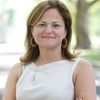
After we just completed an election season where democracy was under attack across the country -- from Citizens United-era "dark money" to voter suppression laws -- a movement has sprung up in New York City that seeks to strengthen rather than subvert involvement in the democratic process. It's called participatory budgeting.
As the name implies, participatory budgeting gives residents real decision-making power over how city money is spent in their neighborhoods. In 2011, I was one of four NYC Council Members to relinquish control over a substantial portion of our discretionary capital funds and encourage community members to vote on how those funds would be spent.
In its first year, the participatory budgeting (PB) process in New York involved thousands of people in the four City Council districts, making decisions about the allocation of $5.6 million, which funded 27 capital projects, as detailed in the first-anniversary report released by the Community Development Project at the Urban Justice Center along with the PBNYC Research Team.
The PB process, called "revolutionary civics in action" by the New York Times, was so successful that four additional city council members have joined in for the second cycle of the process. The most important feature of PB is its profoundly democratic and inclusionary character. Residents come together in a series of neighborhood assemblies to brainstorm ideas about what is needed in their community. Volunteer budget delegates then meet in committees for several months, developing the ideas into concrete project proposals with the help of experts and city agencies. At the end of the cycle, communities come out to vote for the projects they most want the city to fund.
In my district, which covers El Barrio/East Harlem, Manhattan Valley and Mott Haven, 50 percent of residents are Latino, 25 percent are African-American, and 40 percent have incomes less than $25,000. My district has the greatest concentration of public housing in the city. In East Harlem about 30 percent of households live in poverty with a 17 percent unemployment rate. Residents in my community historically have been disenfranchised; in the past, many have felt excluded by traditional politics, disillusioned with government, and powerless to bring about change. These are the people PB is intended to reach.
Data results collected throughout the process demonstrated that the PB process actively engaged residents who do not normally participate in government or interact with public officials. Unlike general elections, PB voters were not excluded due to immigrant or parolee status. Historically disenfranchised groups such as people of color, low-income people, and residents whose primary language is not English, participated at higher rates in the PB process than they did in the general election.
In my district, African-Americans and Latinos both voted in the PB process at a higher rate than they had voted in the 2009 elections; half of the budget delegates were black, which is more than double the black population of District 8; an astounding 22 percent of PB voters had household income less than $10,000 compared to 4 percent of the district's voters in the 2009 general election; and youth were three times more likely to vote in the PB process then they were in the 2009 local elections.
Early in the process, I attended a neighborhood assembly at the Douglass Houses public housing development, located in the Manhattan Valley portion of my district. I watched as an upper-income parent from a local school interacted with Douglass residents. Though she had come prepared with a wish list of capital upgrades for her child's school, she quickly put those needs aside when she learned about some of the conditions in the housing development. The power of neighbors working together and understanding one another is unbelievable and is just one reason that I'm so committed to this movement.
New York is only the second place in the U.S. to practice participatory budgeting. (Chicago Alderman Joe Moore has also used PB in his district.) But it has been deployed in other countries for many years. The Brazilian city of Porto Alegre implemented the first official PB project in 1989, a process that eventually came to include 100,000 people or one third of the city's poor. It has since spread to more than 1,000 municipalities across the globe, ranging from small towns to big cities. Last year, a citywide process was launched in Vallejo, Calif., and the newly elected Mayor of San Juan, Carmen Yulín Cruz Soto, has pledged to put in place a PB process during her administration.
In the 2011-12 cycle, participatory budgeting only determined the allocation of a tiny portion of NYC's $9.2 billion capital budget. But it's a start. As residents and communities come to understand its incredible potential, I am confident that PB will grow exponentially in this city and across the country, serving as a sharp contrast to the voter suppression and political disenfranchisement taking place in our electoral system. Most importantly, the process of bringing together a wide range of people across racial, ethnic, and class lines -- people who historically have not been empowered to participate in how city dollars are spent -- has the potential to profoundly change the urban political landscape.
